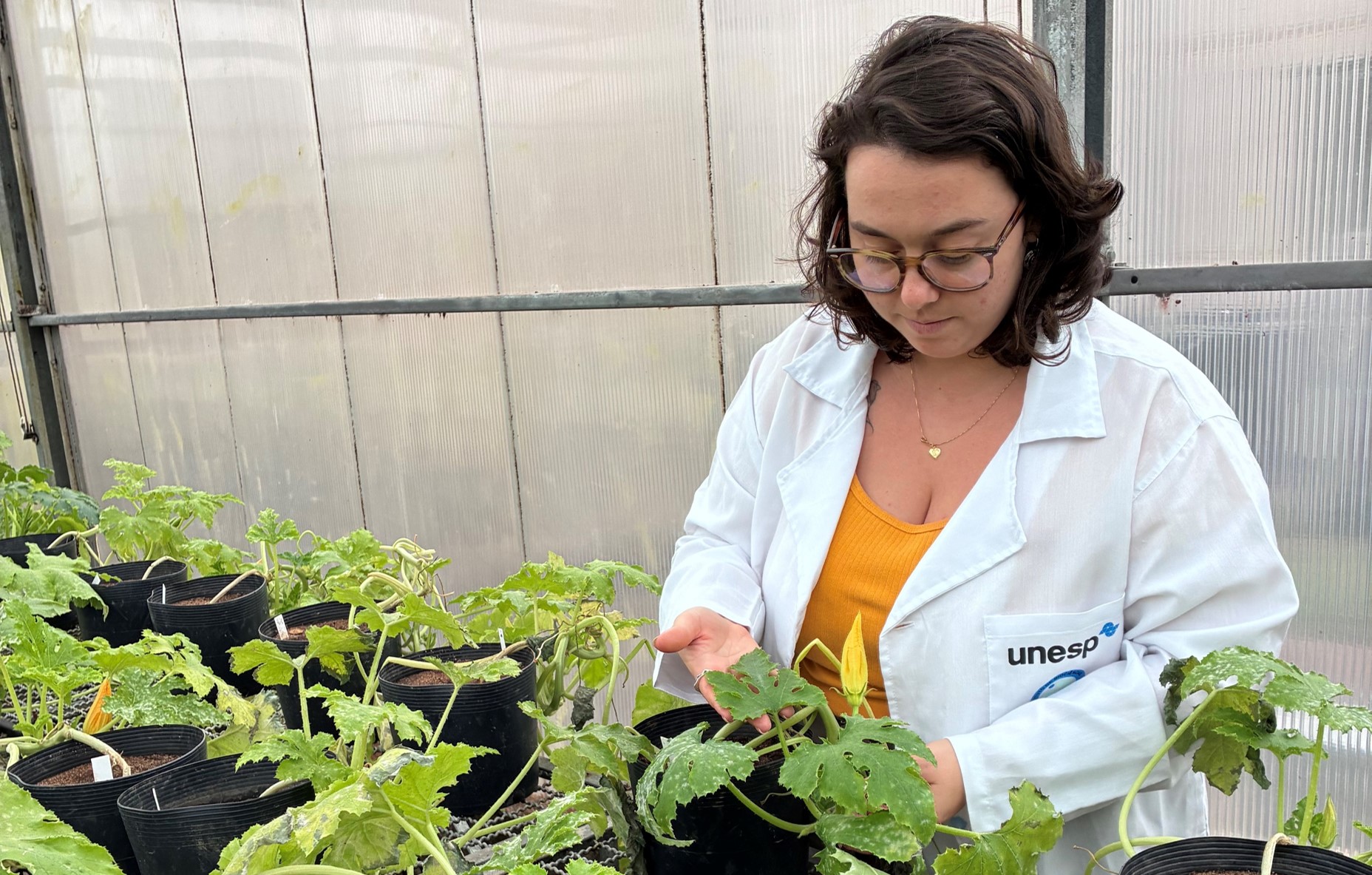

Female zucchini flower, one of the species that depends on cross-pollination for reproduction. Climate change could reduce attractants for bees, such as nectar, impacting natural and cultivated areas (photo: Wikimedia Commons)
An experiment carried out by researchers from São Paulo State University on zucchini crops indicated that a 30% drop in rainfall would reduce the availability of calories in the sweet liquid that serves as food for pollinators, such as bees, by 34%, while extreme drought practically wipes out the resource. These results are particularly concerning for plants that depend on cross-pollination.
An experiment carried out by researchers from São Paulo State University on zucchini crops indicated that a 30% drop in rainfall would reduce the availability of calories in the sweet liquid that serves as food for pollinators, such as bees, by 34%, while extreme drought practically wipes out the resource. These results are particularly concerning for plants that depend on cross-pollination.

Female zucchini flower, one of the species that depends on cross-pollination for reproduction. Climate change could reduce attractants for bees, such as nectar, impacting natural and cultivated areas (photo: Wikimedia Commons)
By André Julião | Agência FAPESP – A study supported by FAPESP indicates that projected droughts by the end of this century could reduce the caloric value of flower nectar by up to 95%. This would harm pollinators, such as bees, as well as plants that depend on cross-pollination to reproduce and bear fruit, such as zucchini (Cucurbita pepo). In a less drastic scenario with a 30% reduction in rainfall, the drop was 34%.
The results were published in the journal Scientific Reports.
“In terms of calories potentially lost in the nectar, this is equivalent to more than a ton of sugar per hectare, from 1,325 to 71 kilos. Without nectar to consume, the bees leave, the plants don’t reproduce, and the farmers lose production,” explains Elza Guimarães, a professor at the Botucatu Institute of Biosciences of São Paulo State University (IBB-UNESP) in Brazil and coordinator of the study.
Guimarães is also affiliated with the Center for Research on Biodiversity Dynamics and Climate Change (CBioClima), a FAPESP Research, Innovation, and Dissemination Center (RIDC) based at the UNESP Institute of Biosciences in Rio Claro.
Their work showed that an increase in rainfall positively affected an increase in nectar calories by 74%. However, the researchers point out the problems of heavier rainfall events in a wider ecological context.
“A high frequency and intensity of rainfall can have devastating consequences for plants, flower visitors such as birds and insects, and the maintenance of interactions between plants and pollinators,” says Maria Luisa Frigero, the study’s first author, who conducted the research during her master's program at IBB-UNESP.
For example, the authors cite the decrease in pollinator activity during rainy periods. Heavy rains make it difficult for pollinators to fly and regulate their body temperature, so they require more energy to search for food. Additionally, increased erosion and loss of nutrients affect crops.
Experiments
These experiments were conducted on zucchini plants grown in a greenhouse and irrigated to simulate the rainfall patterns of the past 40 years in September, the month in which the plants are typically cultivated in the Botucatu region. The scenarios of increased and decreased rainfall are those predicted by the Intergovernmental Panel on Climate Change (IPCC) for the end of the century.
One hundred and twenty plants were grown under equal temperature, nutrient, and water conditions until the first leaves sprouted. After this period, the plants were divided into four groups of 30. Each group received a different treatment to simulate different rainfall conditions.
One control group remained within the normal rainfall regime for the time of year in the region. The other groups received an amount of water proportional to decreased (30% reduction), increased (57% increase), or drought (decrease equivalent to 80% of normal rainfall followed by irrigation proportional to extreme rainfall) scenarios. This simulated the effect of prolonged drought followed by heavy rain.
To ensure that no insects consumed the nectar, the plants were monitored for 60 days in a closed greenhouse. During this time, the amount of nectar and total sugars produced by each flower and plant was measured. The data also enabled the estimation of nectar and sugar production per planted area.

Maria Luisa Frigero observes flowering plants in the greenhouse (photo: Elza Guimarães/IBB-UNESP)
Although these results are from experimental work in a greenhouse with a cultivated species, the authors believe they strongly indicate what can happen in natural environments and with other agricultural crops. This study included the collaboration of Carmen Boaro, a physiologist and professor at IBB-UNESP, and Leonardo Galetto, an ecologist at the National University of Córdoba in Argentina.
“We’re now exploring the effects of climate change on native and cultivated plant species by testing the impact of heat waves and other extreme events. Another development of this study is the investigation of how bees react to the changes that occur in flowers in this context, by means of behavioral analyses,” says Priscila Tunes, co-author of the work, who is doing a post-doctorate at IBB-UNESP with a scholarship from FAPESP and is currently doing an internship at Queen Mary University of London in the United Kingdom.
The article “Extreme events induced by climate change alter nectar offer to pollinators in cross pollination-dependent crops” can be read at: www.nature.com/articles/s41598-025-94565-2.
Republish
The Agency FAPESP licenses news via Creative Commons (CC-BY-NC-ND) so that they can be republished free of charge and in a simple way by other digital or printed vehicles. Agência FAPESP must be credited as the source of the content being republished and the name of the reporter (if any) must be attributed. Using the HMTL button below allows compliance with these rules, detailed in Digital Republishing Policy FAPESP.





